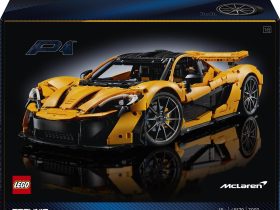The thing that makes riding motorcycles so attractive, especially among its cult following of enthusiasts, is the heritage. It is that illustrious history. It is the unrequited coolness of James Dean and Steve McQueen. It is the badassery of the Hell’s Angels that made the camaraderie of riding as a unit what it is. It is the stories of motorcycle messenger’s delivering key information during the two great wars and the level of skill that was required. One of the key selling points of a bike is the pedigree that is attached. Businesses all know the value of brand loyalty, but none have reached the heights achieved by motorcycle manufacturers.
But if you think these manufacturers have been sticking to the past in order to secure their future then you are about as wrong as anyone can be.
Manufacturers the world over have been making futuristic improvements to their bikes, bringing them into the 21st Century in subtle ways that are making noticeable differences to the experience gained from riding a motorcycle. It has been a balancing act like no other. After all, it is quite a challenge to integrate modern changes so delicately that the pedigree of a brand isn’t put at risk.
That is what we are about to talk you through, though. We are about to show you just how motorcycle manufacturers have incorporated modern technologies to make riding safer for those just starting out on two wheels, without sacrificing the raw experience craved for by experienced riders. It really is a story of success.
Light Your World Up
Even the most hardcore, experienced, adrenaline-loving rider tends to be wary of riding at night. That feeling of battling against unseen dangers is just one of the most uncomfortable feelings you can ever encounter. After dark is just a time of hazards galore for the simple fact visibility decreases a hundred-fold. The first major problem associated with this is how much harder it is for other drivers to see you, the rider, at night. This is a concern because most motorcycle accidents are caused by other road-users, as Haffner Lawyers will tell you, lawyers, who specialise in motorcycle accidents. The other side of the coin is the lack of visibility offered to the rider, especially when it comes to corners and turns.
Animals crossing the road, potholes, stalled vehicles; all of these are dangers that become so much harder to see when only a portion of the road is lit up. To counter this issue, a lot of manufacturers have added adaptive headlights to their motorcycles. Using onboard sensors, these headlights work out how much the rider is leaning into a turn and then uses the information to adjust the direction of the headlight. This means previously dark areas of road are now illuminated improving the safety of night time riding by around ninety percent.
Manning The Throttle
Not so long ago, the throttle was controlled by a wire. You had a direct relationship with the engine. You had complete control over how much oomph you gave it. The problem with this archaic system was the risk involved, such as sudden stalls that often led to a massive loss of control. That is partly why the industry has subtly ushered in a new era of electronic throttles, also know as ride-by-wire throttles. So, nowadays – instead of you turning the throttle and fuel entering the engine just like that – an electronic signal is sent from the throttle to a small onboard computer, which does loads of math calculations very quickly to make sure you are getting the exact power you need.
This onboard computer weighs up how much more throttle you are asking for and then quickly compares this to the current speed your engine is working at, the actual speed you are doing on the bike and what gear you are in. Having calculated all this, it then tells the engine how much throttle to actually release. By doing this the rider has far more control over the engine, offering up a ride smoother than any you will have ever experienced on a bike. The other thing this new technology allows is a choice of modes, much like you get in modern cars. Eco. Sport. Rough terrain. Whatever it is you require. This will then work to improve your ride comfort, fuel efficiency, performance and, yes, safety too.
Next level Stability
Being able to stay on two-wheels is the most important ability in a rider’s arsenal. Period. It is why maintaining stability is the main focus of every instructor’s class. Of course it is. When you drive a car, you don’t have to concern yourself with any thoughts about whether all four wheels are on the road, you just know they are. On a bike, however, you have to constantly and proactively do all you can to stay upright and not topple over. Yes, you can get things like steering dampers, new tires and shock absorbers to give you that extra bit of control, but it isn’t always enough. That is where new stability control technology comes in.
It is promising to make issues of stability a bygone thought that we will laugh about in years to come. The way these sensors work is kind of similar to the way the electronic throttle operates in the sense that it uses a computer to make quick decisions based on real-time data being fed to it through the sensors. The way it works is complex, but the results are simple: the computer notices whether you have lost traction and then takes over by engaging engine brakes to regain control. It doesn’t matter what you the rider are doing, the computer takes over. According to Sean MacDonald, a celebrated motorcycle journalist, this makes crashing almost impossible.
Summary
The advancements in technology are celebrated across the automotive industry and have seen huge strides made in the realm of safety. However, these safety pledges have been almost exclusive to four wheels. As you can see, though, the motorcycle industry has been making huge strides on this front and has almost implemented a safety-first policy among riding, much to the benefit of everyone on the roads.







